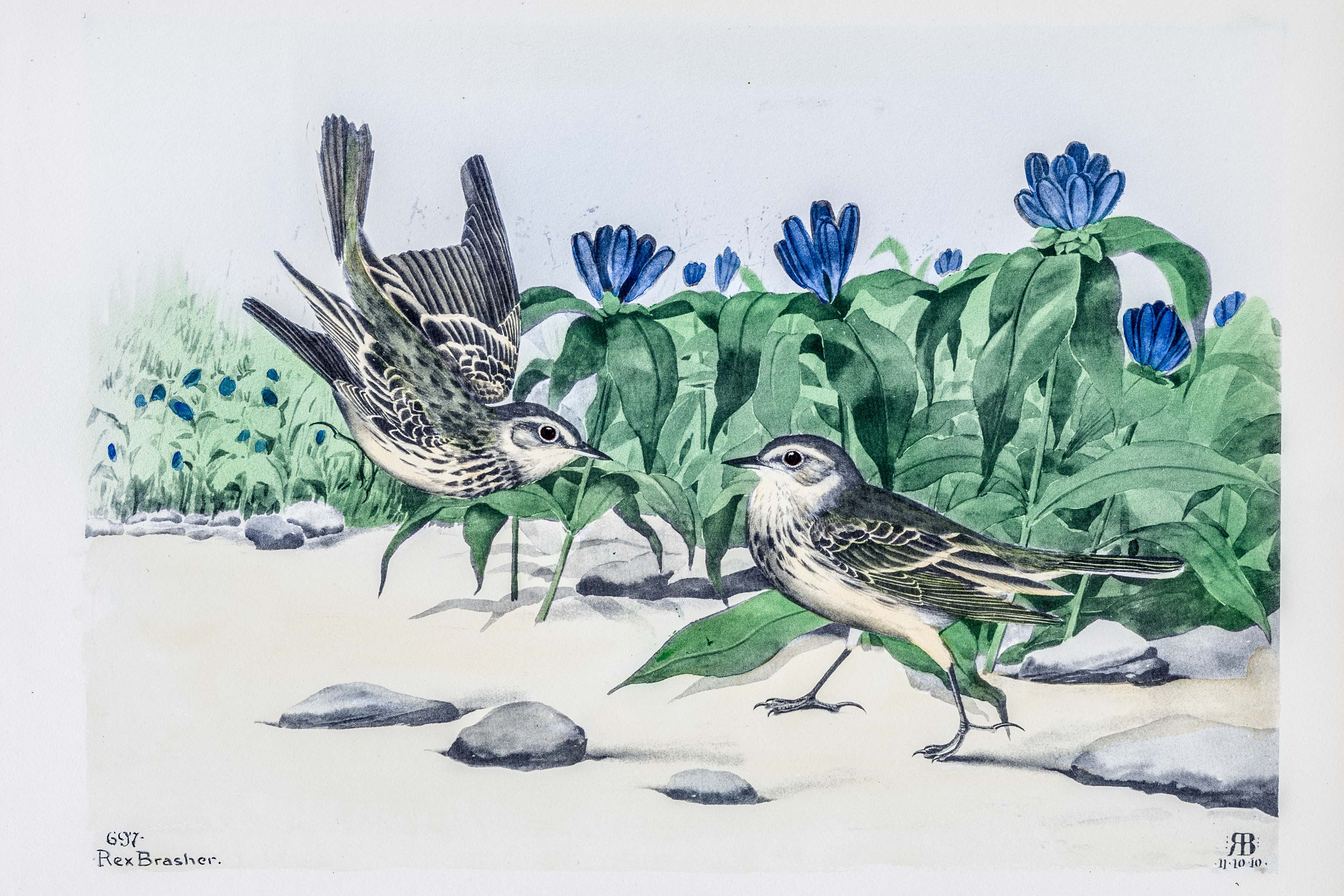
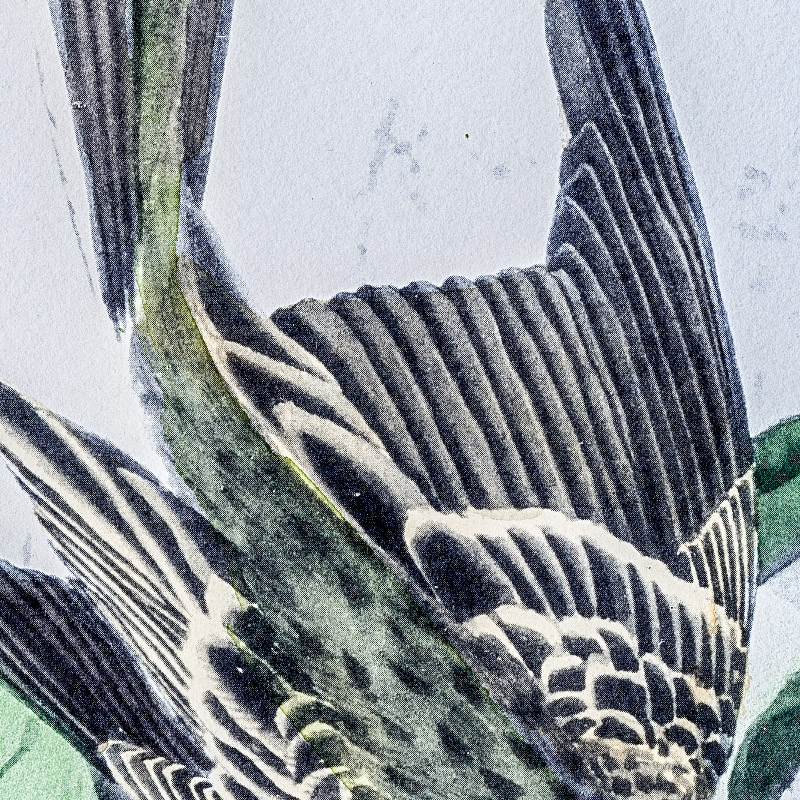
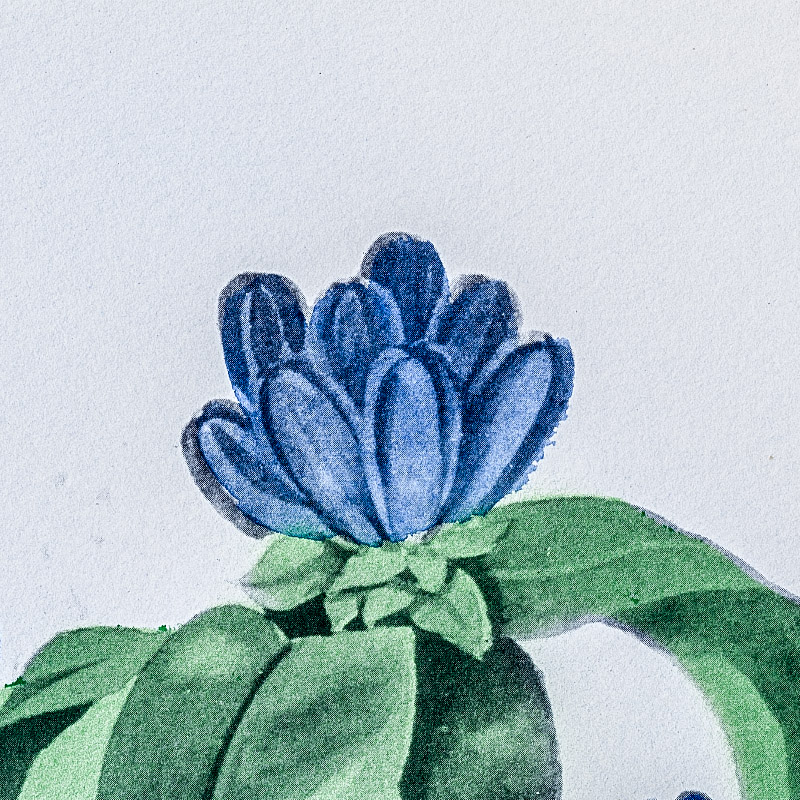
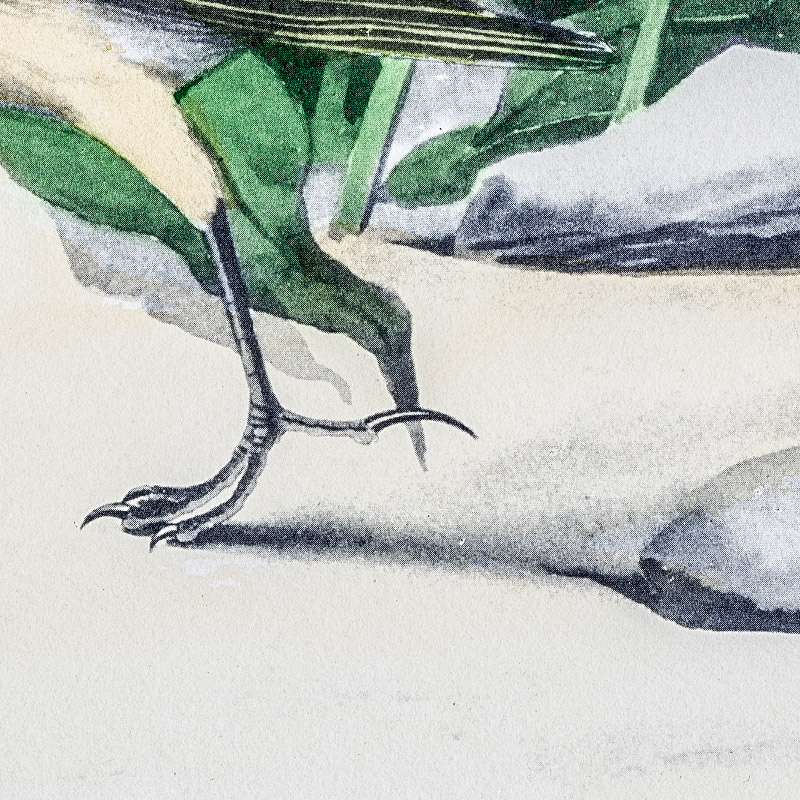

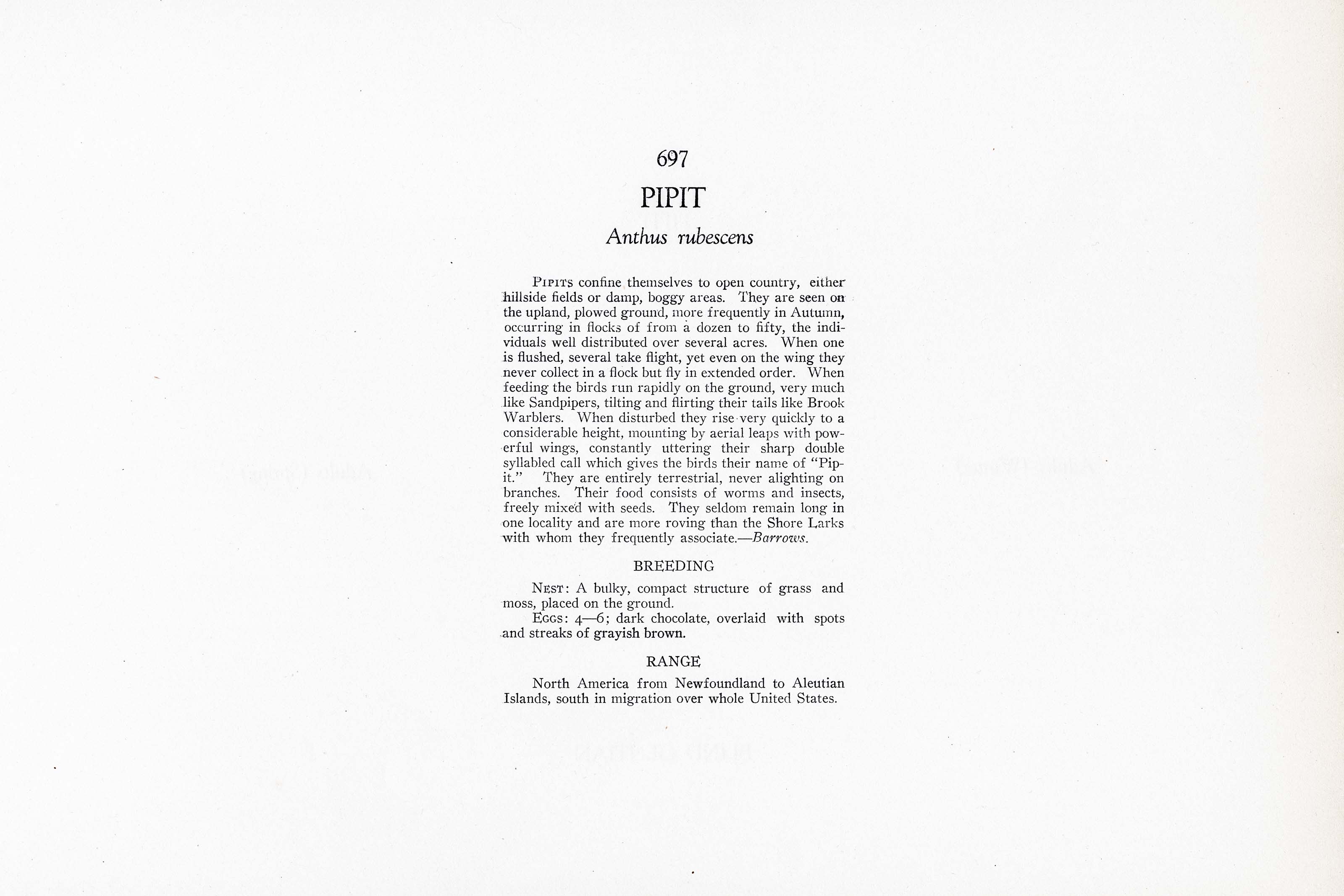

1910
1930
11
697
A team of dedicated board members, volunteers, and student interns has published every page in Volume 9. This volume includes 360 images of paintings and lyrical descriptions of birds, now available online for everyone to enjoy anywhere in the world. This is a monumental task. Each volume requires approximately 400 hours to photograph, edit, transcribe, catalog, and publish online. We need your support to complete this work.
If you're tech-savvy, have a good eye, are meticulous with details, and love structured data, please consider volunteering by emailing us at hello@rexbrasher.org.
We encourage all bird lovers and supporters to consider a monetary donation to support our mission to make Rex's work available for everyone. You can provide a one-time or recurring donation online.
PIPITS confine themselves to open country, either hillside fields or damp, boggy areas. They are seen on the upland, plowed ground, more frequently in Autumn, occurring in flocks of from a dozen to fifty, the individuals well distributed over several acres. When one is flushed, several take flight, yet even on the wing they never collect in a flock but fly in extended order. When feeding the birds run rapidly on the ground, very much like Sandpipers, tilting and flirting their tails like Brook Warblers. When disturbed they rise very quickly to a considerable height, mounting by aerial leaps with powerful wings, constantly uttering their sharp double syllabled call which gives the birds their name of "Pipit." They are entirely terrestrial, never alighting on branches. Their food consists of worms and insects, freely mixed with seeds. They seldom remain long in one locality and are more roving than the Shore Larks with whom they frequently associate. —Barrows.
NEST: A bulky, compact structure of grass and moss, placed on the ground.
EGGS: 4–6; dark chocolate, overlaid with spots and streaks of grayish brown.
North America from Newfoundland to Aleutian Islands, south in migration over whole United States.